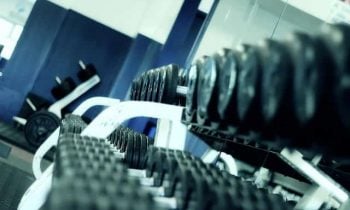Setting foot in the gym as an older person can be a bit daunting. This is especially true when you haven’t been to one for a while. You’re surrounded by strong young people doing exercises that you’ve never heard of or working out on machines that look more faddish and gimmicky than effective. But once you know how to navigate the gym, there are plenty of resources to help people over the age of fifty get into a good exercise routine. It’s just a matter of knowing what you’re facing.
The treadmill and static cycling sections are by far the most popular in most gyms. There will be abundant treadmills, cycling machines, stepping machines, and other machines where the goal is to get you walking or running. I’d advise to go for machines that are not fully automated, so you can stop in a split second if you ever need to.
When we want to lift weights, our options are free weights and machines. Free weights are great for building strength and balance at once. Start out with very light weights and practice simple, isolation exercises, focusing on one muscle or muscle group at a time. A disadvantage to free weights is they can be dangerous if you don’t know what you’re doing.
Machines are a better option if you’re not feeling too sure of yourself or what you are doing. Follow the instructions (there is usually a sticker telling you what exercises each machine lets you do) and you will be able to exercise without risking hurting a joint or dropping weight on yourself. You still need to be careful and increase the weight very gradually, as it can still be dangerous if you overload or overwork yourself.
There is usually a space where you can access exercise balls, stretching bands, and skipping ropes, among other things. If you are more into aerobics routines, or if you are interested in picking up some older exercises you learned a while back, here is where you will find the supplies to get you moving. If you can’t spot an exercise aide that you’d love to use, ask the people behind the counter about the options. You will also find a gymnastics section. If you are still sprightly and flexible, many gyms have plenty of fittings such as balance beams, monkey bars, wall bars, or even trampolines for you to have fun with.
Many gyms offer a wide range of classes. Sometimes you just want to walk in and be shown what you need to do. Classes will range from yoga and Pilates, through trendy activities like Zumba and boxercise, including martial arts lessons, all the way to spinning courses and weightlifting courses designed to motivate you through your exercise adventures. Find out what your gym offers and see if any of it appeals to you. Unfortunately, these classes often incur a fee on top of your gym membership.
Some gyms have swimming pools. If you would rather paddle and dive and float, try out the pools available at your gym. Usually they will have accessibility features, and even rent out pool equipment for the day if you want to do some water aerobics. Gyms with pools usually offer swimming classes as well, ranging from learning how to swim, all the way to fun water games and courses to meet other swimmers and have a good time in the water.
I would strongly recommend for you to not to take advice from anyone who offers it at the gym. With all the different health fads that are becoming popular lately, almost everyone thinks they are an expert and feels it is their place to give advice. They may seem confident and educated, but in reality they simply have an inflated ego and their advice may even be dangerous. Some of them may even be casual, unqualified personal trainers, or looking to sell you supplements or a diet course. They might be assuming you will give in easily just because you are an older person, and may attempt to confuse or trick you. When offered unsolicited advice at the gym, politely decline any help. Instead, trust gym staff, or, if you get one, your qualified personal trainer when in doubt.


 GYM workout
GYM workout Caloric Intake for Over 50s
Caloric Intake for Over 50s Vitamin D for Over 50
Vitamin D for Over 50 Magnesium for Over 50
Magnesium for Over 50 Bodyweight exercises
Bodyweight exercises